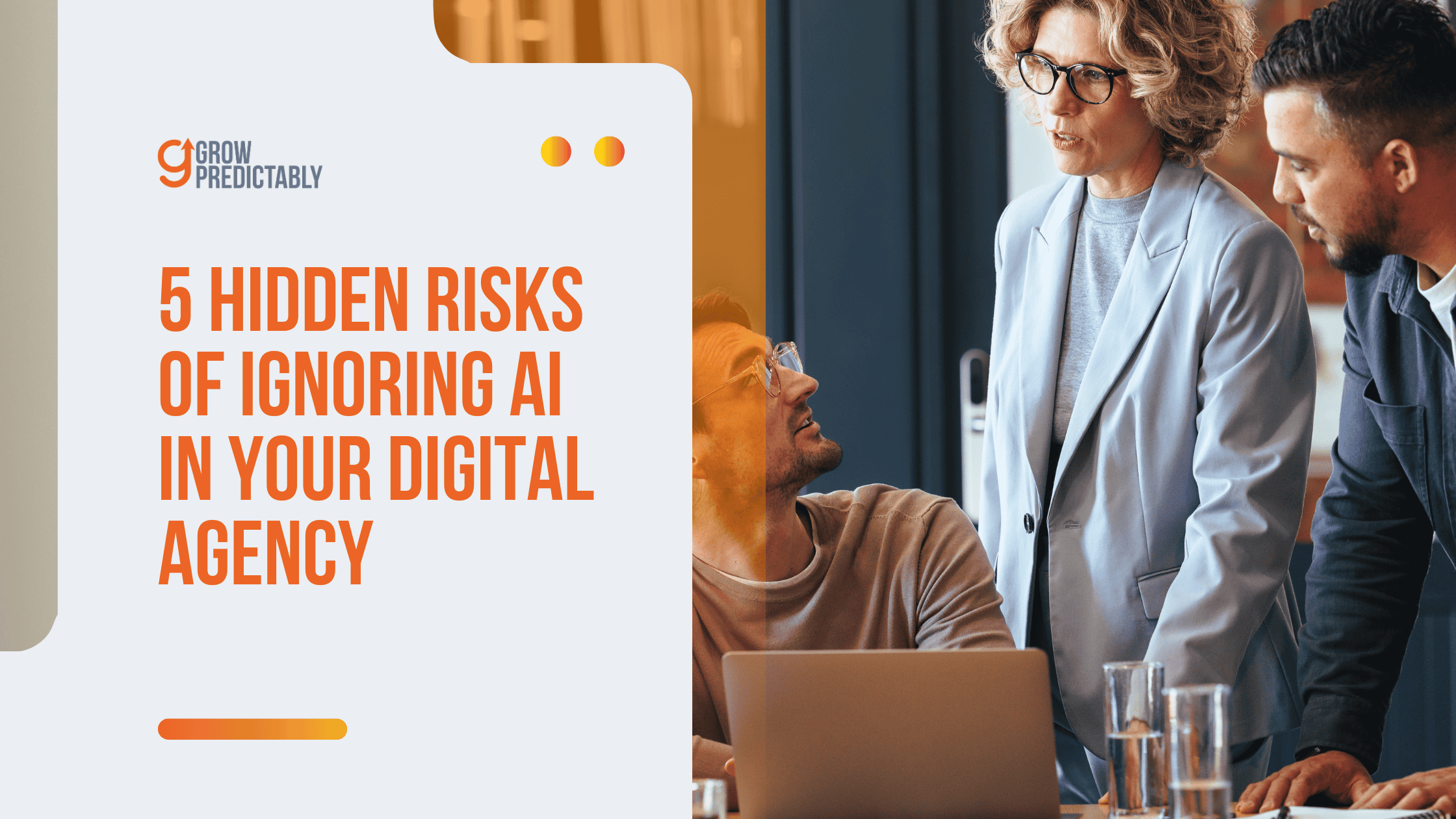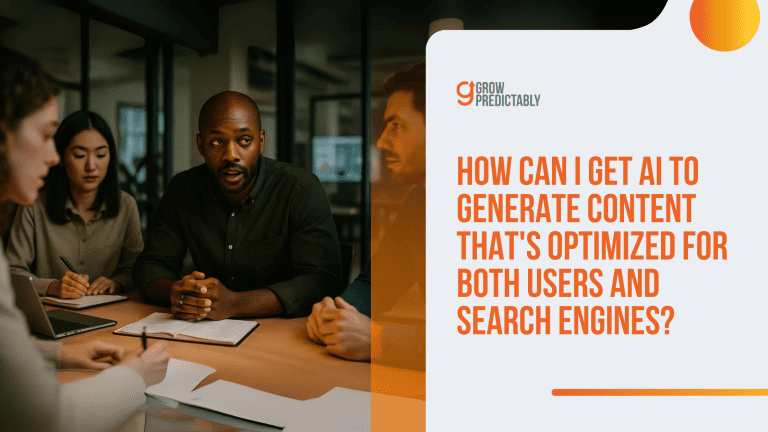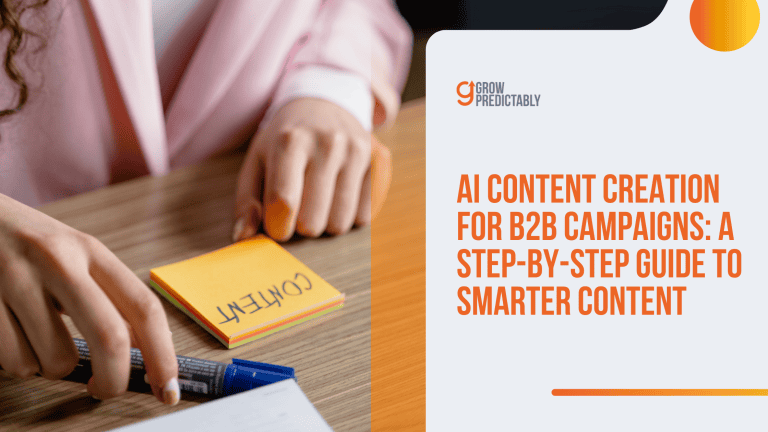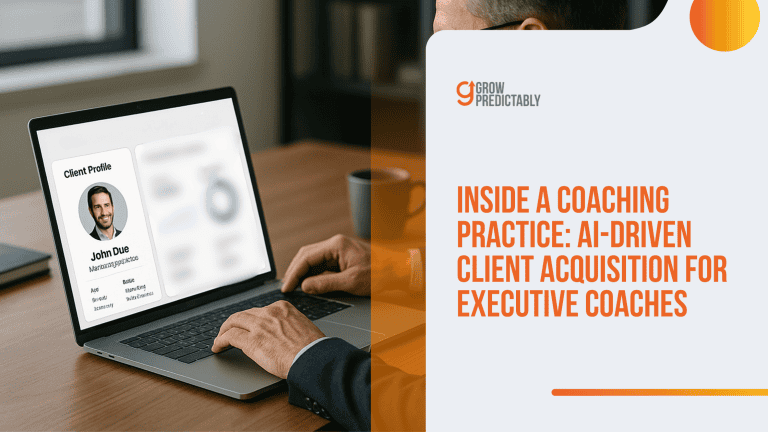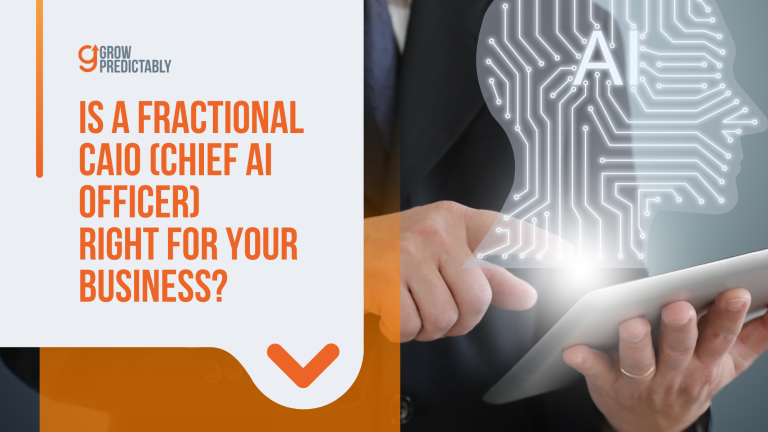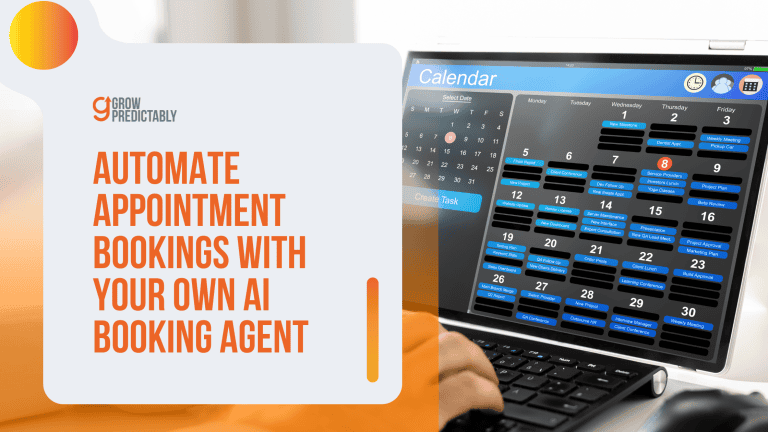5 Hidden Risks of Ignoring AI in Your Digital Agency
Ignoring AI sounds safe until you check the numbers.
Agencies using AI aren’t just saving time; they’re keeping clients and driving ROI—25% higher conversion rates, 22% better retention. (Source)
If you’re not adapting, your clients won’t wait—they’ll bounce to shops that are.
Since artificial intelligence came into the picture, advancements in marketing and sales have been rapid.
Traditional digital agencies have a lot of catching up to do…
Let’s dig into what separates the survivors from those left behind.
TL;DR
Ignoring AI in your digital agency can lead to significant risks, including losing clients to AI-equipped competitors, internal workflow inefficiencies, increased client churn, and stagnation in innovation. These factors can put your agency at a competitive disadvantage, particularly in talent acquisition and scaling personalized services, impacting your bottom line.
KEY TAKEAWAYS
- Identify and leverage AI tools that can streamline repetitive tasks and reduce operational bottlenecks within your agency.
- Train your team on AI capabilities and integrate AI-driven solutions into your marketing processes to stay competitive.
- Develop a strategic plan for AI implementation that prioritizes data security and ethical considerations, building trust with your clients.
AI’s Ability, Role, and Future in Digital Agencies
One agency doubled its inbound leads in six months using AI.
Another lost 40% of its client base by ignoring it.
What made the difference?
By the end of this article, you’ll understand how artificial intelligence is reshaping agency operations—and how to stay ahead.
In the world of B2B digital marketing agencies, AI is a suite of powerful tools that automate, optimize, and enhance key marketing processes.
Think of AI as your always-on, always-learning assistant that’s constantly working behind the scenes to enhance decision making and make your agency smarter and more effective.
This intelligent assistant shows up in many forms:
- Analyzing mountains of customer data to find patterns humans might miss
- Creating compelling content tailored to specific audiences
- Engaging with customers in real-time through chatbots and personalized messaging
- Optimizing campaigns on the fly based on performance data
How AI Is Changing the Game for Agencies
AI’s impact touches everything about how digital agencies operate and compete.
Let’s break down the three big ways it’s reshaping the industry:
Client Expectations Have Shifted
Clients don’t just want personalization—they expect it.
They want campaigns backed by data, not hunches.
And they’re increasingly asking: “How are you using artificial intelligence to get me better results?”
With AI, businesses are seeing greater results in winning clients by adopting marketing tech advancements.
Based on recent data, AI-personalized campaigns can achieve a 52% better ROI over 12 months compared to non-personalized campaigns. (Source)
A marketing director at a mid-sized B2B tech firm put it this way: “We switched agencies because our previous partner couldn’t deliver the kind of data-driven personalization our competitors were getting.”
Internal Workflows Are Being Reimagined
The days of spending hours on repetitive tasks are ending.
Teams using AI are:
- Turning around projects in half the time
- Scaling content production without adding headcount
- Focusing talent on strategy rather than execution
“What used to take our team a full week now happens in a day and a half,” reports one agency owner who integrated AI into their content workflow.
The Competitive Landscape Is Dividing
Here’s the hard truth: agencies equipped with AI are pulling ahead.
According to Deloitte (2023), AI-forward agencies outperform laggards in client retention and proposal win rates by up to 30%.
This isn’t just about having fancy tech—it’s about delivering measurable results that non-AI agencies simply can’t match, making ignoring AI a costly oversight.
Numbers Don’t Lie About AI’s Ability
The ROI on AI integration is becoming impossible to ignore:
- Speed: 3x faster campaign deployment (McKinsey, 2022)
- Performance: 25% increase in conversion rates using personalized AI content (HubSpot, 2023)
- Efficiency: Up to 40% reduction in time spent on routine tasks
Ask yourself: Are you equipped to deliver the AI-powered results your clients now expect? What’s the cost of relying on legacy systems while others automate?
The gap between AI-enabled agencies and those still doing things “the old way” grows wider every month.
Each campaign, each client interaction, each proposal becomes another opportunity to fall further behind—or pull ahead by avoiding the risks of ignoring AI
Stick around—let’s explore exactly what’s at stake.
Key Takeaways:
- AI is now core to efficient, scalable digital agency operations
- Leading tools and AI models like ChatGPT, Jasper, and HubSpot AI bring measurable ROI
- Early adopters are outpacing competitors in client retention and cost efficiency
Top 6 Risks of Ignoring AI in Your Digital Agency
At this point, you might be wondering if it’s too late to catch up.
It’s not—and here’s why recognizing the risks is your first step.
If you think pushing ‘remind me later’ on AI adoption saves you bucks, think again.
Here are six of the most common risks digital agencies could be facing by ignoring the leverage AI offers.
1. Losing Big Clients to Smarter Competitors
Your biggest clients aren’t just shopping for services—they’re hunting for partners who can deliver results faster and more effectively than ever before.
When competitors show up with AI-powered solutions that cut campaign launch time in half while improving performance, client heads turn.
According to statistics, 58% of project managers said AI has positively impacted project quality in their business. (Source)
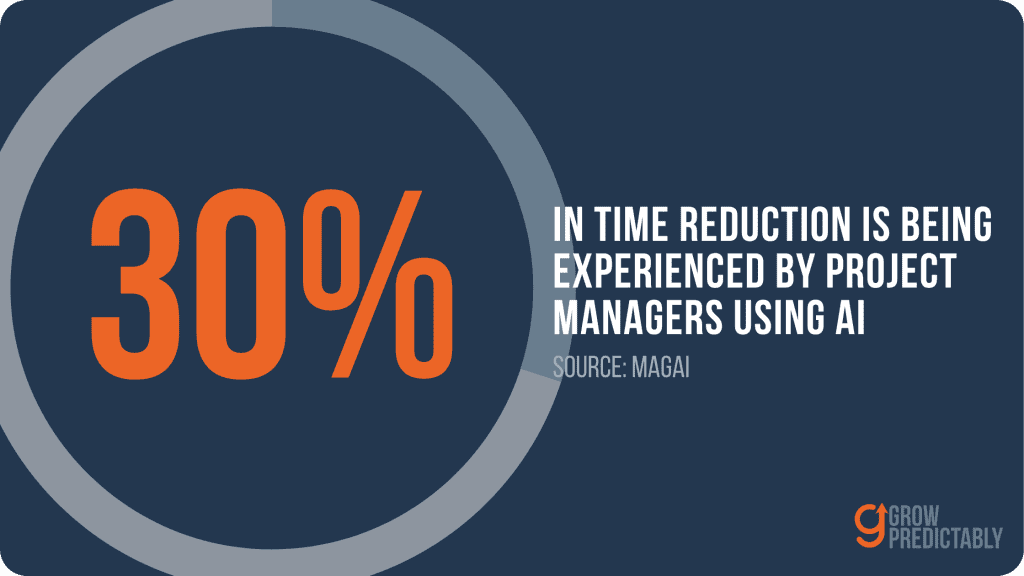
This speed advantage isn’t just impressive—it’s becoming expected.
One mid-sized agency lost three anchor clients in a single quarter after those clients saw AI-driven results from a competitor’s pitch.
What happens when your top client realizes you’re still doing manually what others automate brilliantly?
How much of your revenue walks out the door with them?
2. Operational Bottlenecks and Burnout
Your team is drowning in repetitive tasks that AI could handle in minutes.
Content creation, performance reporting, audience segmentation—these time-intensive processes eat away at your team’s creative energy and strategic thinking.
The numbers tell the story: agencies without AI automation spend up to 60% of their time on execution rather than strategy (Gartner, 2023).
This imbalance leads to talent burnout and exodus.
Creative professionals didn’t join your agency to spend hours copying data into spreadsheets or tweaking minor variations of ad copy.
When your best people are stuck doing what machines do better, how long before they leave for shops that free them to do their best work?
3. Client Dissatisfaction and Churn
Today’s clients expect personalization at scale—a very tedious feat to deliver without AI assistance.
When campaigns underperform because they lack the data-driven optimization that AI provides, client patience wears thin quickly.
Based on a comprehensive analysis of AI-driven personalization in strategic communications, AI-personalized campaigns achieved a 38% higher conversion rate compared to non-personalized campaigns across all industries. (Source)
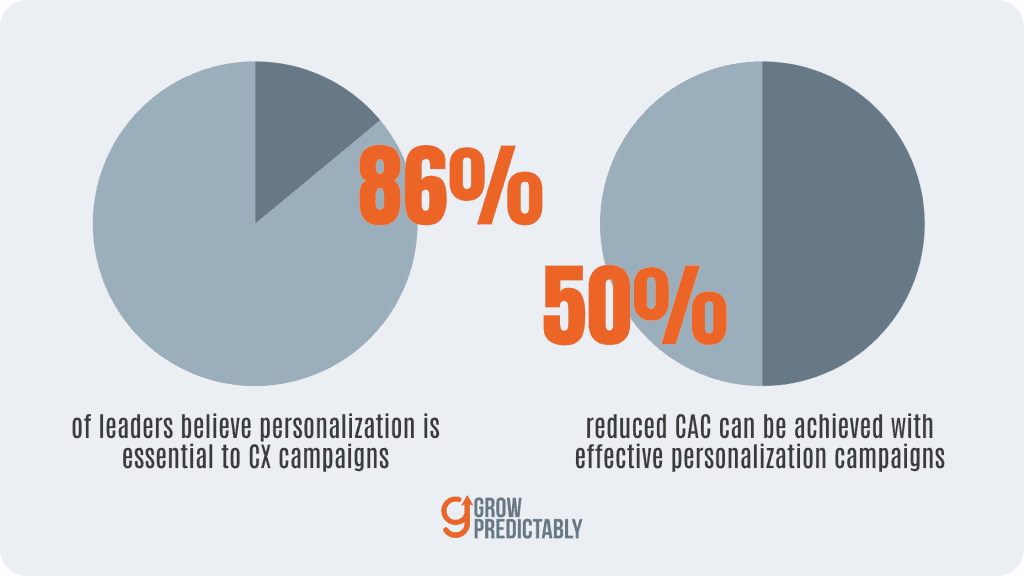
Without these tools, your campaigns may consistently underdeliver against competitors who leverage this advantage.
One telling sign: agencies leveraging AI report 22% higher client retention rates than those that don’t.
Can your agency afford a revolving door of clients who leave after seeing lackluster results compared to what AI-equipped competitors deliver?
4. Stagnation in Innovation
Innovation isn’t optional in digital marketing—it’s survival.
Agencies that fail to experiment with AI find themselves perpetually playing catch-up, offering yesterday’s solutions to today’s problems.
This innovation gap compounds over time.
While AI-forward agencies experiment with emerging tools like StabilityAI for creative development, laggards remain stuck in outdated workflows.
This gap widens as AI tools learn and improve from usage data—meaning early adopters gain compounding advantages over those still ignoring AI.
When your agency pitches the same solutions you offered two years ago, how will you justify your fees against competitors showcasing cutting-edge capabilities?
But what does it look like when these risks become reality—or are overcome?
- AI-lagging agencies risk client churn and brand damage
- Time and cost advantages favor AI-forward competitors
- Legal and reputational risks rise when governance is ignored
5. Competitive Disadvantage in Talent Acquisition
In an industry where talent is a key differentiator, being on the cutting edge of technology is crucial.
AI expertise is increasingly sought after by top professionals looking to work at innovative agencies.
When your competitors leverage AI and automation, they attract talent that values working with futuristic tools and cutting-edge technology.
If your digital agency lags in AI adoption, potential hires may perceive it as stagnant, preferring to join agencies that embrace modern methodologies.
Once the word spreads that your agency isn’t investing in the most advanced tools, how many promising candidates will choose to look elsewhere?
6. Inability to Scale Personalized Experiences
As the demand for hyper-personalization intensifies, the absence of AI makes it challenging to deliver tailor-made experiences at scale.
Without AI, your agency might struggle to gather insights from the vast amounts of data necessary for meaningful customization.
Offering the right customized experiences to your clients today has become more essential now than a decade ago.
According to this infographic from McKinsey…

Agencies that fail to scale personalized marketing efforts risk becoming obsolete in a market that increasingly expects tailored interactions around every corner. (Source)
The inability to leverage AI for personalization may lead clients to view your offerings as generic, resulting in them seeking out competitors capable of providing nuanced and data-driven engagements.
Common Barriers to AI Adoption and How to Overcome Them
Feeling overwhelmed by AI is a common experience.
Most agency leaders face the same four hurdles—we’re here to help you clear them.
1. Knowledge & Skill Gaps
Your team can’t implement what they don’t understand. Without basic AI literacy, even simple automation opportunities get missed.
Start with small, focused AI training.
Have team leads complete a single AI course that relates directly to their department’s work. Then let them experiment with one tool for two weeks on non-client projects.
Quick Win:
Schedule a “Tool Tuesday” where team members get 30 minutes to demonstrate one AI tool they’ve tested. This builds shared knowledge without overwhelming anyone.
2. Workflow Integration Challenges
Bolting AI onto broken processes creates more problems than it solves. The magic happens when AI enhances what’s already working.
Map your current workflows first. Identify the 3 most repetitive, time-consuming tasks your team handles. These are your prime AI integration points. Start with just one, document the process, and measure time saved.
Quick Win:
Use Zapier to connect an AI tool to your existing systems. For example, automatically send client meeting transcripts to an AI for summary and action item extraction.
3. Budget Constraints
Premium AI tools can seem expensive when viewed in isolation rather than through the lens of ROI and time savings.
Begin with free or low-cost options. Many powerful AI tools offer free tiers or affordable entry points. Calculate the hourly cost of manual tasks versus AI automation to justify investment in paid tools later.
Quick Win:
Start with ChatGPT’s free version for content ideation, client email drafting, and meeting prep. Track time saved to build your business case for more advanced tools.
4. Ethical and Privacy Concerns
Client trust is your currency.
Using AI without proper governance and robust cybersecurity measures can open a window to security risks such as data breaches, bias issues, and mishandling sensitive data, leading to damaged relationships.
- Create a simple one-page AI ethics policy to promote ethical AI use.
- Define what client data can and cannot be processed through AI tools to prevent any attempts to gain unauthorized access.
- Be transparent with clients about where and how you use AI in their work.
Quick Win:
Add a quick AI disclosure to your service agreements that explains your commitment to responsible AI use and data protection.
Simple decision path: Start small → Measure impact → Scale what works → Repeat
Getting Started: The 7-Day AI Sprint
When facing these barriers, momentum matters more than perfection.
Here’s your first-week plan:
- Monday: Choose one repetitive task to automate
- Tuesday: Select a free or low-cost AI tool to test
- Wednesday: Create a simple before/after process document
- Thursday: Train one team member as your AI champion
- Friday: Run your first AI-assisted project (internal only)
- Weekend: Review results and adjust
- Next Monday: Share wins and lessons with the team
Remember:
- Don’t let fear or data issues stall transformation
- Start small and scale what works
- Ethical use = client trust = long-term wins
In a market moving this fast, irrelevance isn’t a risk—it’s a timeline.
Digital agencies face a watershed moment.
The AI revolution isn’t coming—it’s already reshaping client expectations, team capabilities, and market positioning at breakneck speed.
What seemed cutting-edge six months ago is now table stakes, and the gap between AI-powered agencies and traditional shops grows wider each quarter.
Where do you see yourself in the next quarter as a traditional digital agency?
4 AI Trends Reshaping Client Demand Today
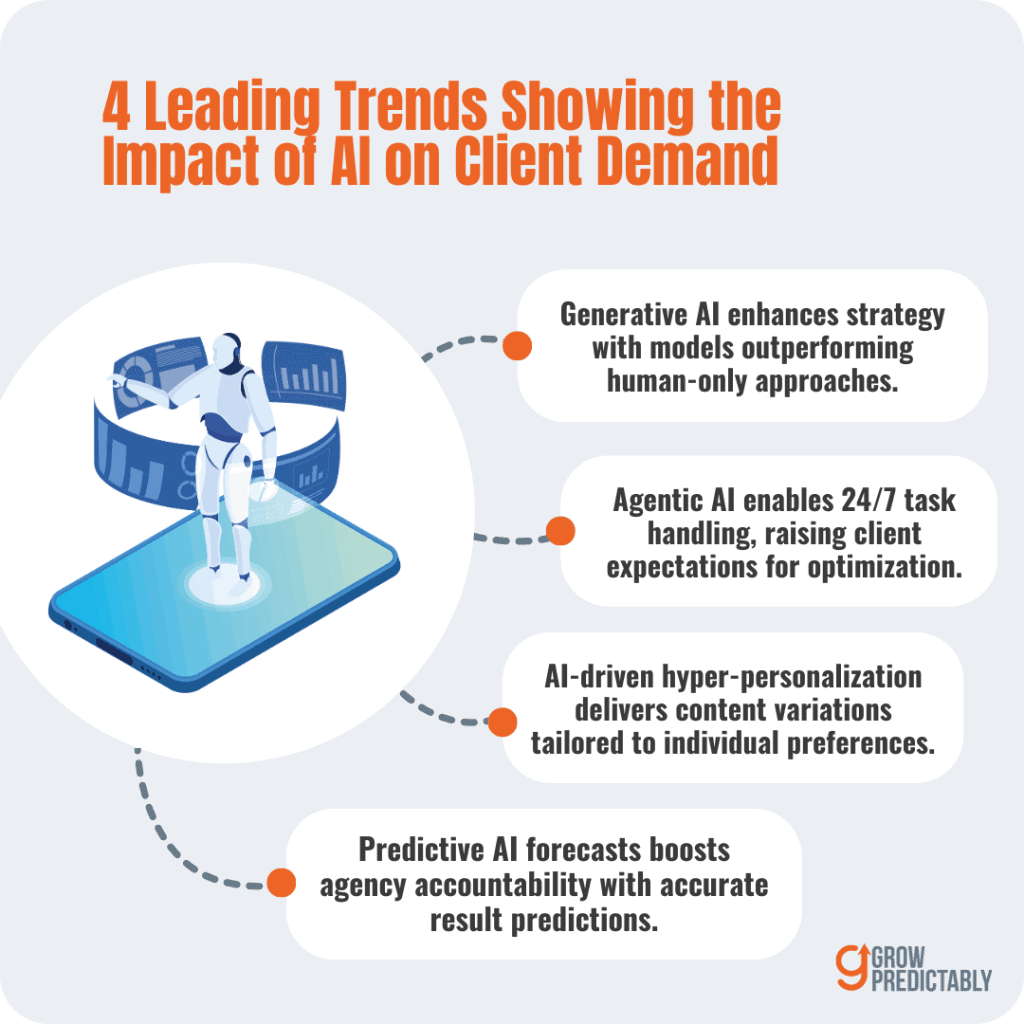
1. Generative AI Beyond Content
While content generation grabbed early headlines, the real transformation is happening in strategy and analytics.
AI models now generate entire campaign frameworks, audience segmentation models, and predictive budget allocations that outperform human-only approaches.
Clients who experience these capabilities rarely return to traditional methods.
As one CMO put it: “Once you’ve seen AI’s ability in action, with its superior data driven decision making capabilities, manual planning feels like using a paper map instead of GPS.”
2. Agentic AI Working 24/7
AI systems that autonomously handle tasks like campaign optimization, content distribution, and performance reporting are creating new client expectations around speed and responsiveness.
These “always-on” capabilities mean clients increasingly expect continuous optimization rather than periodic reviews—and agencies without these systems miss out on enhancing decision making to compete on performance or price.
3. Hyper-Personalization At Scale
The personalization bar keeps rising.
What was once “personalized” (using a first name in an email) has given way to dynamically generated content tailored to individual behavior patterns, preferences, and customer data, creating more relevant experiences.
Agencies with AI systems can now deliver thousands of personalized creative variations and customer journeys, significantly boosting customer satisfaction, where traditional shops might manage dozens—at comparable cost.
4. Predictive Client Success
Leading agencies now use AI to forecast client results with startling accuracy, enhancing decision making, setting expectations, and adjusting strategies before campaigns even launch.
This predictive capability is creating a new standard for agency accountability and transparency that traditional forecasting can’t match.
Which Agency Will You Be in 2025?
The question isn’t whether your agency will adopt AI—it’s whether you’ll do it early enough to matter.
Stanford’s Human-Centered AI Institute predicts that by 2025, up to 40% of traditional agency tasks will be AI-automated or AI-enhanced, fundamentally changing the skills, pricing models, and client relationships that define success.
Harvard Business Review’s latest analysis of professional services firms found that early AI adopters are already seeing 23% higher client retention and 18% faster growth than peers—a gap expected to widen as AI capabilities compound.
What’s striking is how quickly this shift is happening.
- Three years ago, AI was a competitive advantage.
- Two years ago, it became a differentiator.
- Today, it’s rapidly becoming a baseline expectation.
The Window Is Closing
For agency leaders, this creates a narrowing window of opportunity.
The agencies thriving in 2025 will be those that make decisive AI moves in 2023-2024.
This doesn’t mean abandoning your agency’s unique strengths or creative vision.
The most successful transitions pair AI capabilities with human expertise, using technology to amplify what makes your team special—not replace it.
But it does mean making AI transformation and launching strategic AI initiatives a priority now, with real investment, leadership focus, and change management.
Evaluate your readiness now—because repositioning in 2026 might be too late.
Key Takeaways:
- AI-native agencies are already outgrowing conventional peers by leveraging technology for both efficiency and new capabilities
- Trends in agentic AI and hyper-personalization are reshaping client expectations around speed, scale, and results
- The future belongs to agile, AI-embedded teams that pair human creativity with machine intelligence
- The window for competitive transformation is measured in months, not years
You came here for clarity, confidence, and direction in AI transformation because you understand the stakes of ignoring AI.
Here’s how to take action today.
Recommended Tools
Start with tools that solve real marketing pain points:
Content Creation
- ChatGPT – Perfect for drafting blog posts, social content, and email copy
- Jasper – Specialized for marketing copy with templates for ads and landing pages
- Midjourney – Generate custom images for social media and blog posts
Client Management
- Fireflies.ai – Transcribe client calls and extract action items automatically
- HubSpot’s AI tools – Streamline email personalization and lead scoring
Campaign Optimization
- Google’s Performance Max – AI-driven campaign optimization
- MarketMuse – Content strategy and SEO planning with AI recommendations
Workflow Automation
- Zapier + ChatGPT – Connect AI to your existing tools for truly magical workflows
- Make.com – Build complex automations that incorporate AI services
Take Action Now
Don’t let another quarter pass with outdated workflows. Your competition isn’t waiting.
The agencies thriving with AI didn’t get there overnight.
They started with small steps, improved their decision making, measured results, and scaled what worked.
Your journey starts with that first step.
FAQs
AI is Your Agency’s Future
Bringing it all together, the road ahead is clear: agencies embracing AI aren’t just keeping up—they’re leading, growing, and defining best practices for a new era, while those ignoring AI risk becoming obsolete.
The threats of client churn, burnout, and lost revenue are real, but so are the rewards for those who adapt early.
The human element is still vital—AI simply frees your team to deliver their best.
Now is the moment to step forward.
For more in-depth learning, check out our recommended tools and step-by-step guides below.
How will you leverage AI to not only meet—but exceed—your clients’ rising expectations?
The future belongs to the proactive—make sure your agency is one of them.
Let’s move from uncertainty to opportunity—equip your agency for lasting success with AI as your ally.

